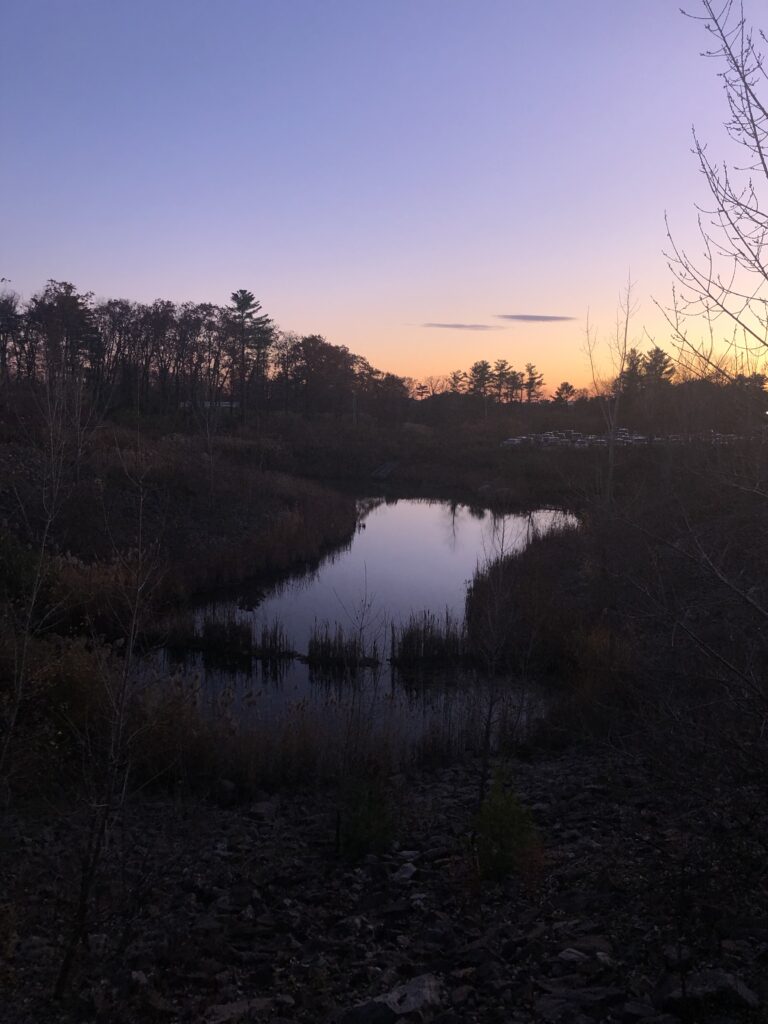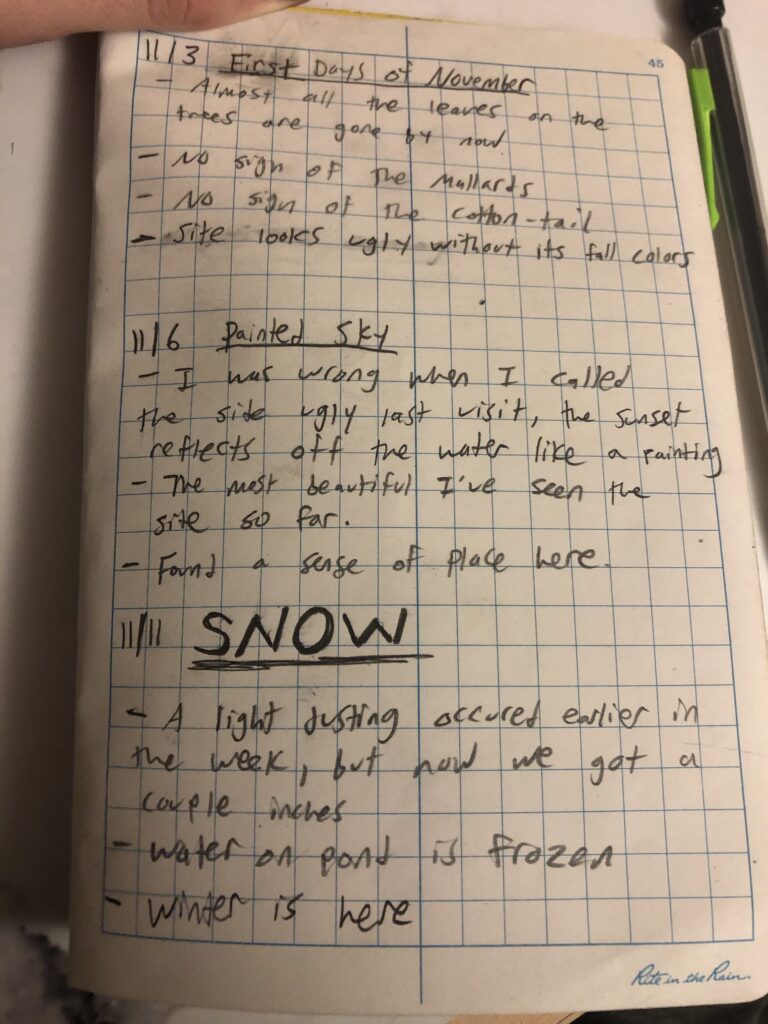Through all of my visits at my phenology site, I have discovered a sense of place. Before this project, I used to walk past the small retention pond on my way to class and think nothing of it. Now I have discovered the characteristics of the site that make it what it is. Over the past month or so I have noticed many phenological changes that have occurred surprisingly fast during this short period of time. During the first week of the project many of the trees still had green leaves, which quickly turned to bright yellow, orange and red colors. As the weeks moved on the leaves peaked their brightness around mid to late October and then started to dull. I noticed two mallard ducks floating on the pond until migrating the first week of November. With no other animals spotted besides a cottontail rabbit, I wondered if the ducks will come back to the same little spot after winter. Many questions like this came along as I observed and visited my site more and more. Through mapping and observing, I also discovered how the pond was man-made to catch runoff from surrounding impermeable surfaces. I noticed that the rocks have little to no weathering and erosion indicating that the pond must be fairly new. I wondered about the history of the location before the man-made pond and surrounding buildings. I assume the site was once part of a cleared land on an 1800s farm before being sold to UVM. In terms of the sense of place component on a larger scale, I thought of the impact the little pond has on Vermont and Lake Champlain. I wonder how much phosphorus is filtered out of the water before being drained into Englesby brook and eventually into the lake. How much of an impact does my little site actually have on creating a more sustainable Vermont? Questions like these occur through the development of a sense of place. I would have never thought so deeply on a small site like this without viewing the area through different lenses. Like I said before, the site used to be just something I walked past everyday. I never would have thought about the location’s history or its impact on Lake Champlain or even wondered if the mallards would be back without finding a sense of place.


